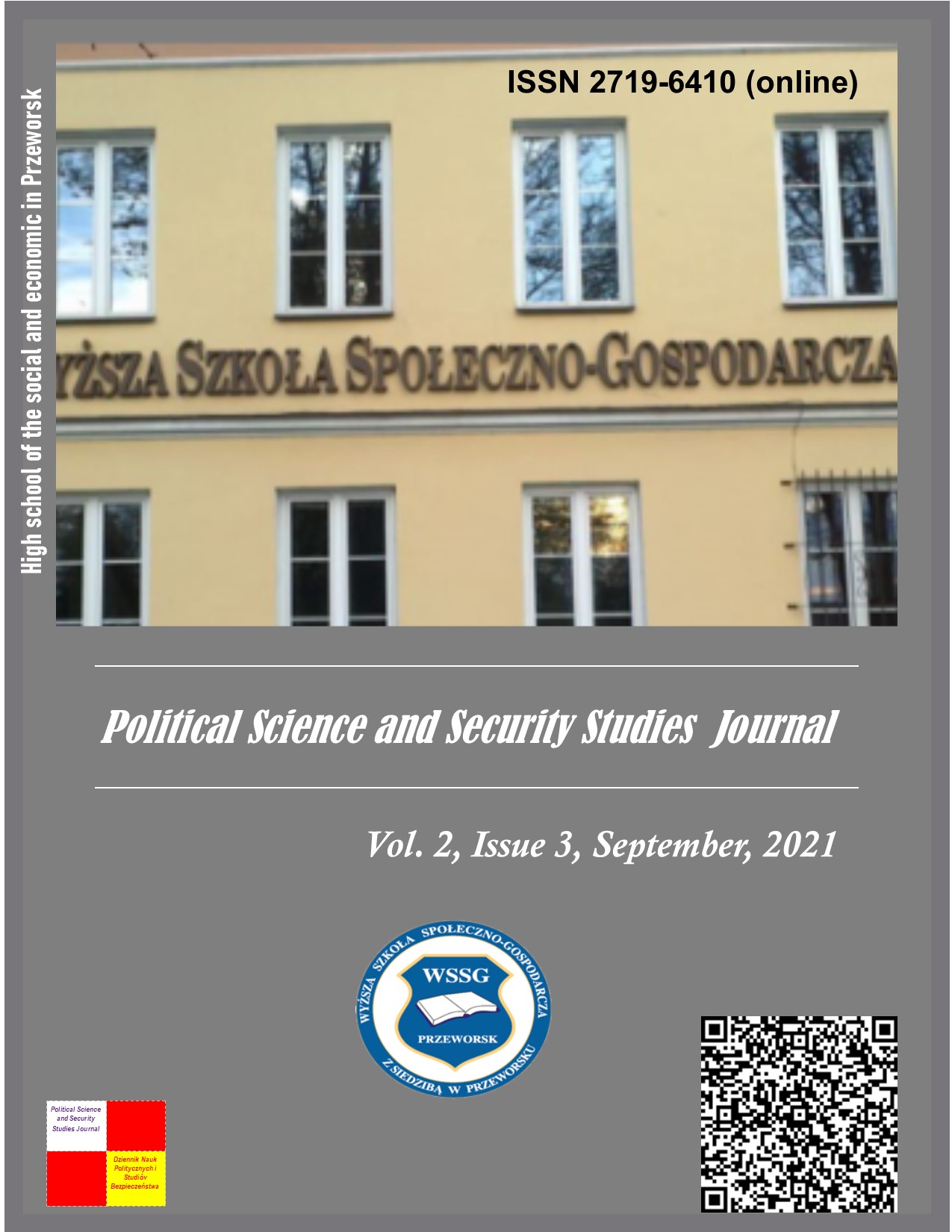Methodology for determining the optimal composition of the raid squad
DOI:
https://doi.org/10.5281/zenodo.5534861Abstract
Technological development of the warring parties, the introduction of new forms and methods of armed struggle, the trend of transition to a network-centric war necessitates the search for ways to improve the effectiveness of carrying out tasks behind enemy lines.The effectiveness of a raid squad in accomplishing its tasks will largely depend on the optimal distribution of available forces and assets over enemy targets. Therefore, the methodology for determining the optimal composition of the raid squad presented in the article is based on the most acceptable in terms of optimality algorithm based on the method of two functions.
The proposed methodology takes into account the probability of a particular enemy object being hit by the units available in the raid squad and the coefficients of operational and tactical importance intended for destroying (disabling) enemy objects.
The methodology is intended for use in raid actions planning.
Downloads
References
Beleskov M. Modern Russian Way of Warfare: Theoretical Foundations and Practical Filling: analyte. ext. Kyiv: NІSD, 2021. 29 p.
Drol O., Guzchenko S., Telyukov S. Methodology for Determining the Optimal Number and Type of Weapons for Mobile Tactical Groups to Ensure Action to Deter the Enemy. Collection of scientific works of KhNUAF. 2020. №2 (64)
Barabash O., Zuyko V. Methods of Optimizing the Composition of Forces and Means of Specific Space Reconnaissance in Operations under Conditions of Destructive Influence of the Enemy. Weapons Systems and Military Equipment. 2009. №1 (17)
Collection of Tactical Calculations with Examples. Kyiv: NDUU named after Ivan Chernyakhovskyi, 2018. 96 p.
Babenko R., Yaroshenko Ya., Nikitenko A., Bazilo S., Zverev O. (2020). Algorithm of Distribution of Guidance Operators for Fighter Control During Air Guidance. Sciences of Europe. Vol 2, No 58. 50-53 p.
Fundamentals of Simulation of Combat Operations. Kyiv: NDAU, 2005. 484 p.
Bevzin E. Optimal Resource Allocation and Elements of Systems Synthesis. Moscow: “Soviet Radio”, 1974. 304 p.
Pashchenko T. Modern Decision Support Methods. Kyiv: NDUU, 2011. 192 p.
Zagorka O., Mosov S., Sbitnev A., Stuzhuk P. Elements of Research on Complex Military Systems. Kyiv: NDUU, 2005. 100 p.
Oliinyk V., Danyliuk I. (2020). Assessing the Importance of Enemy Objects During Raid Actions Planning Using the Method of Hierarchy Analysis. Kyiv: NDUU, “Modern Security and Defence Information Technology”. Volume 38, № 2, pp. 107 – 112.
Oliynyk V., Kokoyko A., Golda O. (2020). Determination of Coefficients of Operational and Tactical Importance of Enemy Objects in the Planning of Combat (Special) Actions of Airborne Assault Troops and Special Operations Forces. Nur-Sultan: NDUK, Military-theoretical Journal “BAGDAR-ORIENTIR”, Issue №4. pp. 25-33.
Handbook for Investigation of Operations. Moscow: Voenizdat, 1979. 368 p.
Wentzel E. (1964). Introduction to operations research. Moscow: “Soviet radio”, 387 p.
Published
How to Cite
Issue
Section
License
The authors agree with the following conditions:
1. Authors retain copyright and grant the journal right of first publication (Download agreement) with the work simultaneously licensed under a Creative Commons Attribution License that allows others to share the work with an acknowledgment of the work's authorship and initial publication in this journal.
2. Authors have the right to complete individual additional agreements for the non-exclusive spreading of the journal’s published version of the work (for example, to post work in the electronic repository of the institution or to publish it as part of a monograph), with the reference to the first publication of the work in this journal.
3. Journal’s politics allows and encourages the placement on the Internet (for example, in the repositories of institutions, personal websites, SSRN, ResearchGate, MPRA, SSOAR, etc.) manuscript of the work by the authors, before and during the process of viewing it by this journal, because it can lead to a productive research discussion and positively affect the efficiency and dynamics of citing the published work (see The Effect of Open Access).















